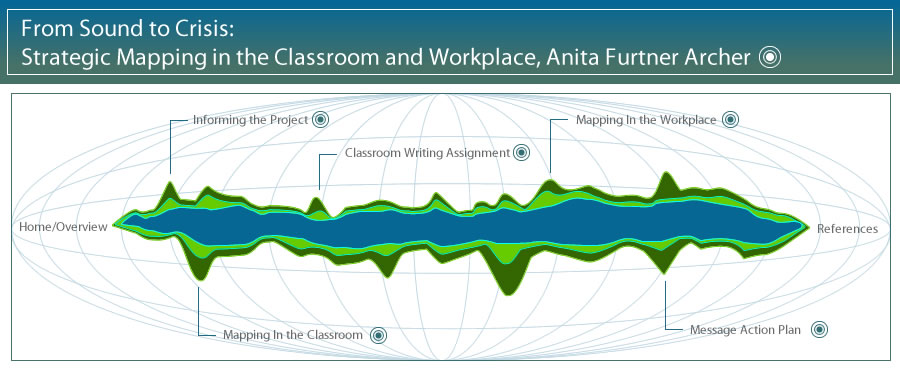| |

|
Composition and rhetoric scholars James E. Porter, Patricia Sullivan, Stuart Blythe, Jeffrey T. Grabill, and Libby Miles (2000) in their essay “Institutional Critique: A Rhetorical Methodology for Change” drew upon the work of geographers to formulate a spatially situated critique and analysis of institutions. They argued that postmodern mapping can be used as a way to think spatially: “More so than other areas of writing studies, professional writing has acknowledged the role of the organization and the importance of visual forms of thinking and representation” (p. 613). Additionally, they noted that:
Postmodern mapping aims to destabilize and retemporalize the map through a focus on its construction and the partiality of any one map’s representation and through the use of multiple maps used in discussions of a social space. Whether the mapping is local or global, its discourse is always a spatial, relational construction of its writers and readers that aims at communication. (p. 623)
In other words, graphic displays of information are social constructs. The mapmaker determines the importance, ordering, and organization of her visual representations. Such visual representation has far-reaching implications for student writers struggling to adapt to new conventions and ways of organizing and structuring information. Providing a space for visual organization can help students who learn better by seeing, allowing them to illustrate the order and content of their writing before composing it. Similarly, mapping helps to determine how the mapmaker believes information should flow by providing a way to see an argument's or message's progression.
Ben F. Barton and Marthalee S. Barton (1993) defined the use of maps as a means of spatial thinking. Barton and Barton reviewed different interpretations of maps and discussed the conventions of these visual representations, specifically how maps can act as metaphors for text and as a collage of juxtapositions. Yet they focus on how maps are considered speech acts. For them, the map’s genre is to provide a visual display of information following rules of inclusion and exclusion, with a focus on emphasis of what is to be mapped over exclusion or reinterpretation. This focus relates to Porter et al.’s argument on the ways in which situations and contexts become visual aids for locating agency and authority. These visible displays work to allow us to visually represent our relationships to the subject, or what is being mapped and represented; how we interact with it; and how our decisions are governed, influenced, and organized.
How does the social construction of maps transfer to the classroom? Click here to learn more. |
|

